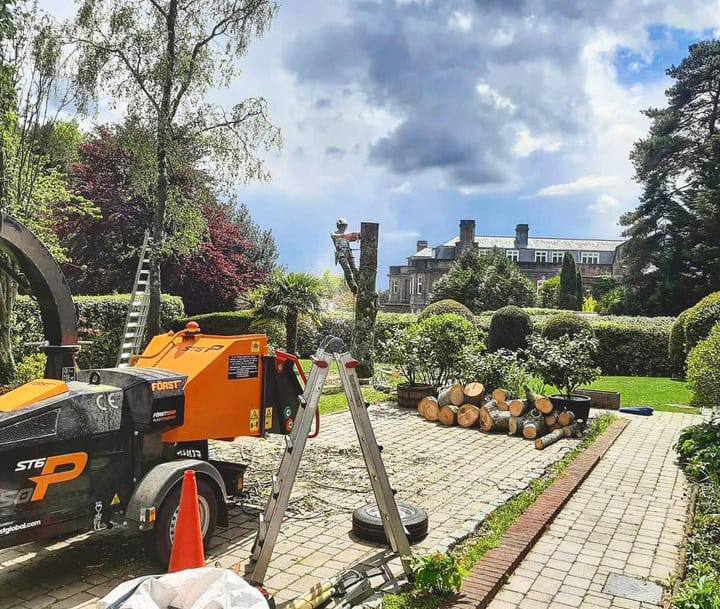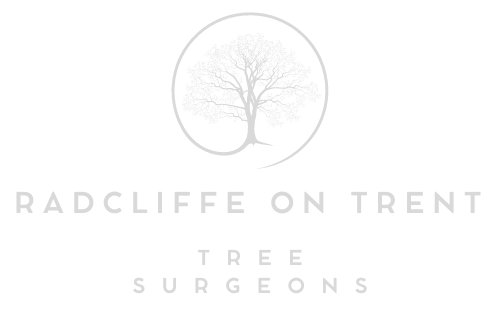Can a Professional Save an Overgrown, Misshaped Hedge?
Introduction
Hedges are a vital part of many gardens across the UK, offering privacy, structure, and visual appeal. However, when left unchecked, even the neatest hedges can quickly become unruly, overgrown, and shapeless. What starts as a low-maintenance green screen can soon dominate your outdoor space — blocking light, affecting nearby plants, or simply looking unsightly.
If your hedge has reached the stage where it appears too far gone, you might be wondering: can it actually be saved? The good news is, yes — in most cases, a professional can restore it to form. At Radcliffe on Trent Tree Surgeons, we regularly help property owners in Nottingham bring their hedges back from the brink using a mix of skill, experience, and the right tools.
Understanding Hedge Overgrowth
Why hedges become wild and uneven
Neglected hedges don’t just grow taller — they also become misshapen, dense in some areas and sparse in others. Without regular maintenance, the plant puts all its energy into upward and outward growth, creating thick branches and a loss of definition.
Common reasons for hedge deterioration:
- Missed seasonal trims
- Inconsistent pruning techniques
- Poor soil or light conditions
- Pest or disease damage
Different species also behave differently when neglected. Fast-growing hedges like Leylandii can become particularly hard to manage, while others, such as beech or yew, may simply lose their symmetry over time.
Can a Hedge Be Rescued?
In most cases — yes, with the right care
The majority of overgrown and misaligned hedges can be salvaged, but the process requires more than a quick snip. Professional tree surgeons or hedge specialists have the knowledge to assess the hedge’s health, structure, and long-term potential before deciding on the most effective approach.
Key considerations before reshaping:
- Species type – Some hedges regenerate better than others after a heavy prune
- Age and health – Older or diseased hedges may need gradual recovery
- Desired height and shape – Clear objectives help determine the level of reduction required
- Time of year – Timing is crucial to avoid damaging growth cycles or disturbing nesting birds
Radcliffe on Trent Tree Surgeons will always assess these factors before beginning any reshaping or restoration work.
Techniques Professionals Use to Restore Hedges
It’s not just about cutting it back
A professional doesn’t just chop away randomly — they’ll use a strategic, phased approach to reduce the size while encouraging healthy regrowth. Depending on the hedge condition, several techniques may be applied.
1. Hard Pruning or Rejuvenation Pruning
Used for badly overgrown hedges, this involves cutting back heavily, sometimes down to old wood. Not all species respond well to this method, so proper identification is key.
2. Phased Reduction
Rather than reducing height and width in one go, the hedge is trimmed gradually over one or two seasons. This reduces stress on the plant and avoids shocking the root system.
3. Shaping and Tapering
Once the bulk is managed, careful tapering (wider at the base, narrower at the top) encourages even light exposure and denser growth.
4. Thinning and Clearing Dead Wood
Removing thick, tangled or dying branches improves air circulation and revitalises the hedge from the inside out.
Benefits of Professional Hedge Restoration
Hiring a professional like Radcliffe on Trent Tree Surgeons not only saves time and effort but also ensures your hedge has the best possible chance of recovery.
Benefits include:
- Expert species identification and tailored care
- Use of specialist tools for cleaner, more precise cuts
- Safer working at height and around large structures
- Reduced risk of plant shock or disease spread
- Long-term health and aesthetic planning
In many cases, what looks like a hedge beyond help is simply a hedge that hasn’t been handled correctly.
Maintenance After Restoration
Keeping your hedge in great shape
Once your hedge has been rescued, it’s important to maintain it regularly to avoid slipping back into overgrowth. Regular trimming, especially during the growing season, keeps the shape intact and encourages compact, bushy growth.
Top tips for hedge care post-restoration:
- Trim two to three times a year depending on species
- Water during dry spells in the first year after a hard cut
- Feed with appropriate fertiliser to encourage regrowth
- Check for signs of pests or disease
At Radcliffe on Trent Tree Surgeons, we offer ongoing maintenance plans to ensure your hedge remains a feature you can be proud of — not one you dread looking at.
Conclusion
An overgrown, misshaped hedge doesn’t mean it’s destined for removal. With the right expertise, almost any hedge can be revitalised, reshaped, and restored to its full potential. Whether it’s a boundary hedge that’s taken over the path or a garden feature that’s lost its structure, professional care can make all the difference.
If you’re in Radcliffe on Trent or the surrounding Nottingham area and struggling with hedge maintenance, let the team at Radcliffe on Trent Tree Surgeons take a look. We’re here to bring tired hedges back to life — safely, professionally, and with results you’ll notice season after season.
Call us on: 0115 647 1195
Click here to find out more about Radcliffe on Trent Tree Surgeons
Click here to complete our contact form and see how we can help with your tree needs.

